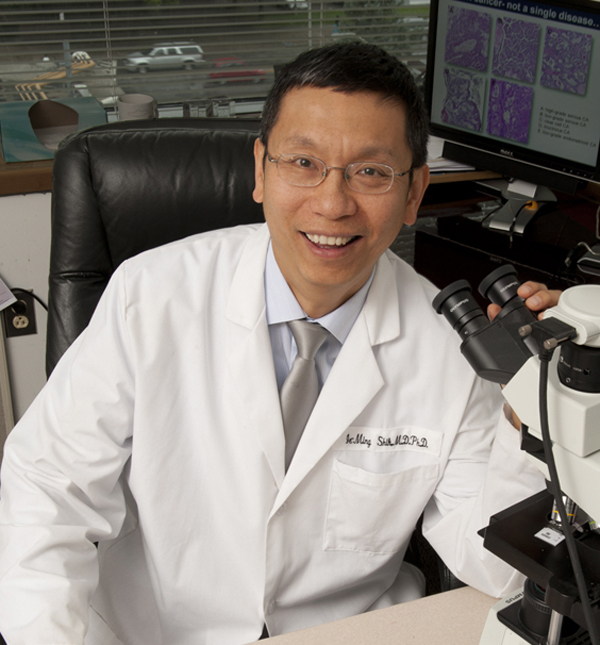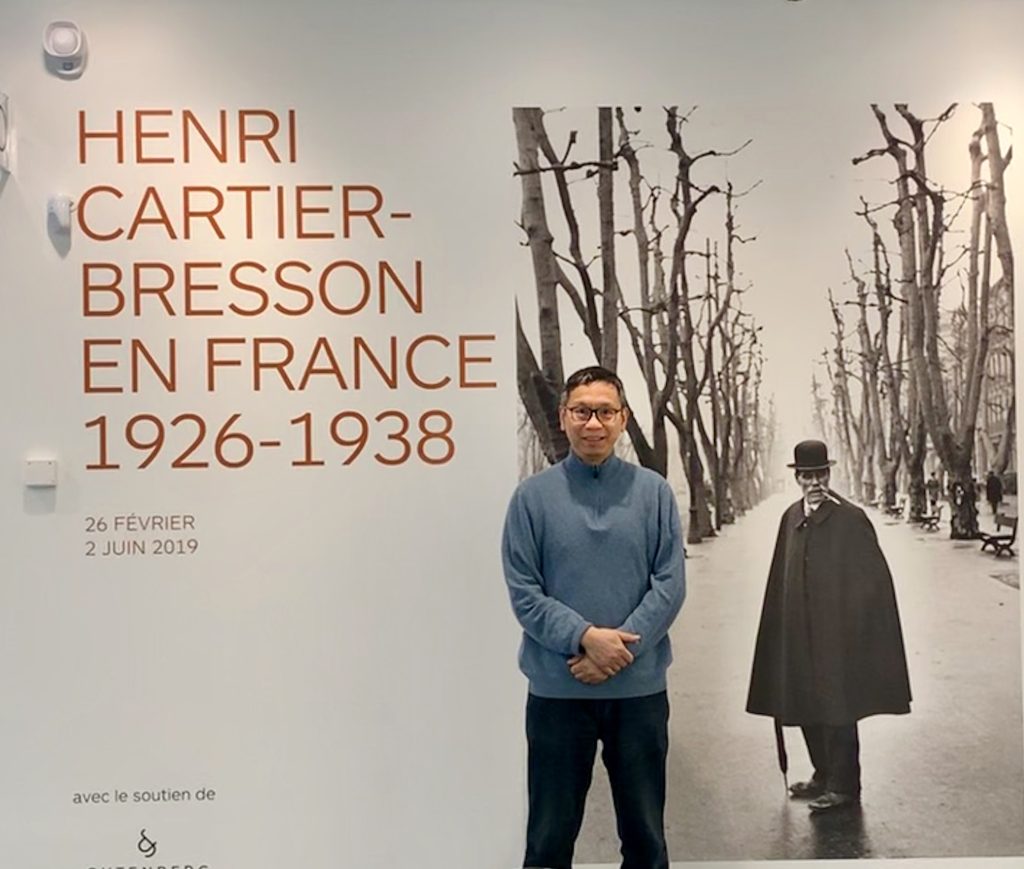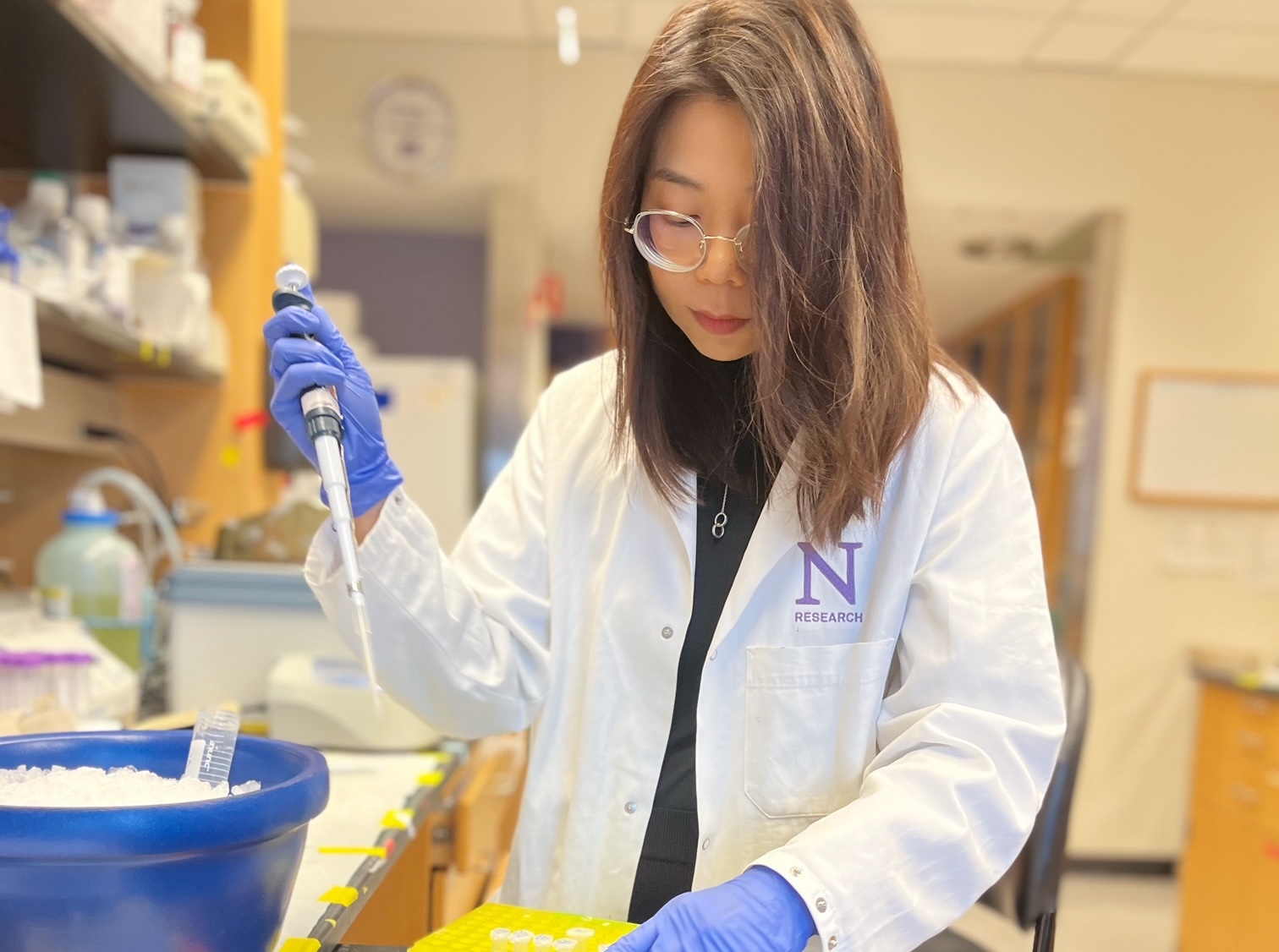
Ie-Ming Shih, MD, PhD is on a quest to better understand the human condition.
He is a pathologist who studies human tissue to learn more about the origins of ovarian cancer; a Distinguished Professor (Endowed Chair) of Gynecologic Pathology who directs that research program at the Johns Hopkins University School of Medicine; the co-director of the Women’s Malignancy Group at the Sidney Kimmel Comprehensive Cancer Center at Hopkins; an OCRA grantee; and a member of OCRA’s Scientific Advisory Committee.
Amazingly, however, Ie-Ming still has free time. And he uses it to engage his mind even further.
“I’m writing a book about how we can make progress to reduce our own inner pain, tentatively entitled ‘Cure for Being Human,’” Ie-Ming said. It explores the pathology of human suffering from the lens of evolutionary biology, modern physics, and philosophy. He notes that evolution has made humans capable of so many things – art, science, technology, the society we have today. And yet, being human, we also experience the ‘pitfall’ of emotions and attachments, which can cause additional pain and suffering.
Treating both body and mind
Ie-Ming is part of an entire medical team that treats those with ovarian cancer. As a pathologist, he studies the tissue taken during surgery and provides a diagnosis that informs how he and the oncology team can best treat the patient. “Based on the pathology reports and molecular studies, we know the specific type of ovarian cancer from an individual patient. Ovarian cancer has different types, and each shows a different response to current therapy.”
In this way, he becomes close with his patients, and their loved ones. And he sees the emotional pain firsthand. “I’ve heard their stories … I not only take care for their underlying physical conditions, but their psychological well-being.”

To Ie-Ming, quality of life is critical. And he recognizes that while some of his patients may know the prognosis is not good, there are still ways to reduce the anxiety of the disease – for themselves and for their families. He wants to know what else he can offer them, aside from targeted therapies and surgery. What mental approach can medical teams offer those who bear emotional weight and uncertainty regarding their diagnosis? These are the synergies he has found between the book he is writing and the work he does in his lab and with patients.
“This is a mind and body business,” he said. This is what I try to advocate for. How can patients keep a peaceful mind in fighting this disease? So many patients are in a panic when they hear about stage 3 or 4 ovarian cancer. How can we help them go through this process? It’s an important task that is overdue.”
‘Every tissue is a story’
Ie-Ming has been drawn to medicine ever since he was sick as a kid. He spent a lot of time in the hospital, growing up, and became familiar with the medical terms and environment. Eventually, he went to a medical school in Taiwan and took a histology/pathology class. He then went to the University of Pennsylvania at Philadelphia to get his PhD in cancer pathology, where he studied malignant tissue even further
“When I looked under the microscope at the tissues, I thought, ‘every single cell, and its society, (meaning the tissue), is a story with so many secrets behind it.’ How does a society become abnormal? Become cancerous? This has intrigued me to understand and explore.”
This is one of the things he is working on in the lab today: better understanding the molecular events and evolutionary history involving the earliest stage of ovarian cancer. He explained that gynecologic tissue is designed for reproduction (nodding, again, to the evolution of the human species). And the human reproduction system is quite complex, “controlled by different factors and conditions to make it perfect in young women.”
As Ie-Ming explains, when a machine becomes more and more sophisticated, it has a greater chance to become abnormal, leading to a variety of gynecologic problems – whether infertility, fibroids, endometriosis, or a gynecologic malignancy like ovarian cancer.
A two-pronged approach to research
He and his team are focusing on how ovarian tissue becomes cancerous. Because the ovaries are so deep inside the body, a tumor would get quite big before a woman would feel any symptoms. So he wants to understand what happens at the beginning of this abnormal growth to see if there is any way to detect the cancer much earlier and intercept it before it spreads.
Ie-Ming spoke of a significant paradigm shift that happened in ovarian cancer research in the past decade or so: the understanding that the most common type of ovarian cancer, high-grade serous, actually begins in the fallopian tubes most of the time. These pre-cancer lesions then spread to the ovaries and thrive in that environment where they grow into a tumor. “Because the fallopian tube is communicating with the uterus and cervix, these pre-cancerous cells have a chance to drop off into the cavity and go into the cervical canal.”
He feels that if he and other researchers can identify these pre-cancer lesions, find a way to detect them through, say, a routine Pap smear, ovarian cancer could be diagnosed much earlier. In the meantime, he notes that “if we remove fallopian tubes [prophylactically] without taking out ovaries, we can substantially prevent many ovarian cancer cases in the population.”
But he knows that there is still much to understand before there is any kind of screening mature enough to catch ovarian cancer early. Until that time, many women are struggling with advanced ovarian cancer. His lab is also focusing on understanding why ovarian cancer becomes resistant to chemotherapy. “I think early detection and prevention is still many years away from becoming realistic in clinics. But at this moment, for those unlucky women who suffer from ovarian cancer, how can we offer help?”
To that end, they are performing many molecular analyses to dissect the alterations in signaling pathways, involving, for example, how cancer cells divide, how they respond to certain proteins and therapies, PARP inhibitors, and even how genetic predispositions, such as BRCA1 and BRCA2 mutations, can change the trajectory of treatment.
“Our goal to these two approaches,” Ie-Ming said, “is to convert the notorious silent killer into a manageable disease.”
A different lens on the human condition
As Ie-Ming said before, treating one’s cancer is not his only goal. He wants to soothe the mental afflictions, the ‘evolutionary trap’ as he calls it. He speaks of the ego-centric view, the innate human trait to compete for social success, to work toward our own benefits and well-being. “But at the same time,” he said, “human beings are so creative. We have this mental power to understand our minds and observe our suffering as a third person and try to find solutions for that.”
And in his spare time? When he’s not treating patients, running a lab, overseeing administration, or writing a book? Ie-Ming is a photographer who takes pictures of water refractions in the Inner Harbor of his hometown of Baltimore. He says of this practice, “The photographer selects a piece of mundane reality to create another totally different and profound reality.”
He argued that fine-art photography is not intended to copy what everybody sees, but rather is a personal interpretation of what the photographer chooses to reflect. Photography, to him, is to capture what you can’t see. Understanding this, we are confronted with the fact that the things we perceive to be real may not be absolutely real.
He equates this approach to understanding photography with one’s approach to a disease like ovarian cancer. Just as photography shows us that “what our eyes see is not absolutely real, how we perceive the reality of the disease itself may not be totally real. We are frightened more about the metaphoric label of the disease than the disease itself.”
He hopes his book (available in 2023) would be a small step to further this conversation about how psychological support including mindfulness meditation can be better integrated into patient care. “This is quite interesting to me. As a pathologist I use the scientific approach to study the disease mechanisms of ovarian cancer and human suffering. I believe that a holistic approach considering patients’ psychological and spiritual needs is a missing part we should fill in soon.”




